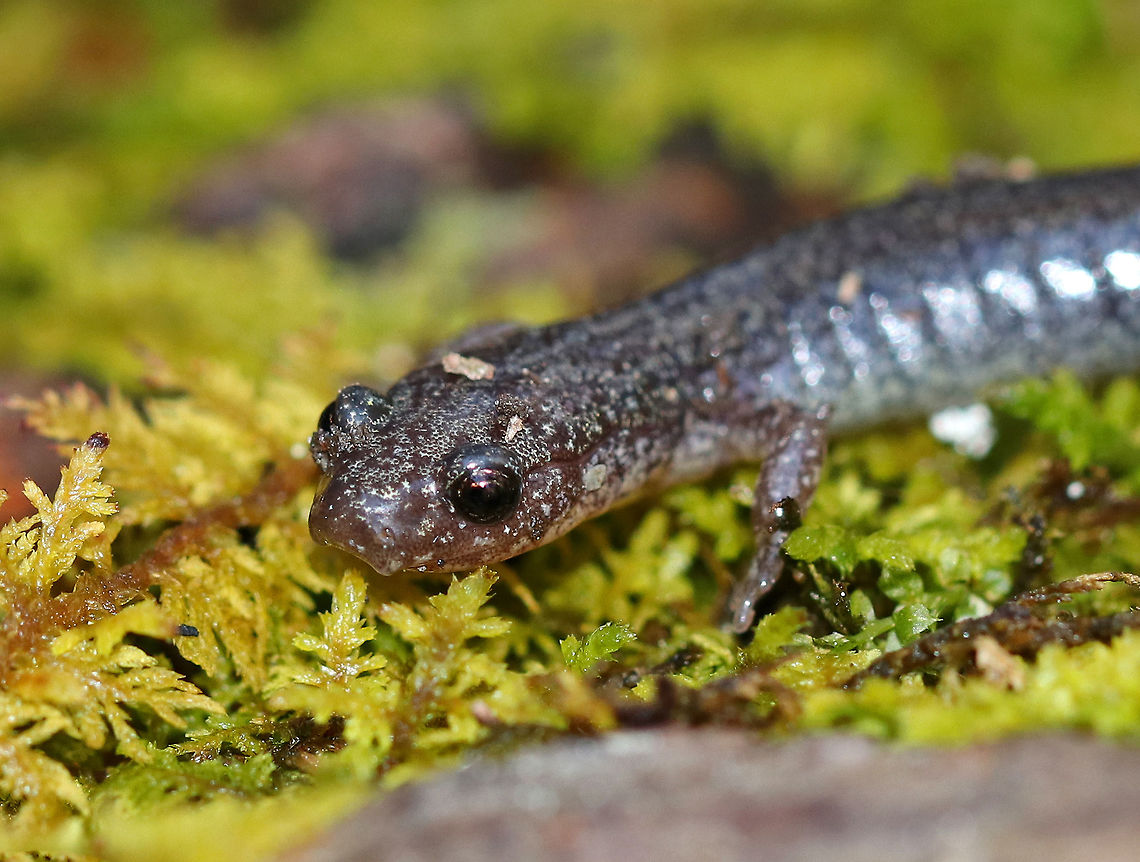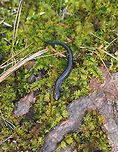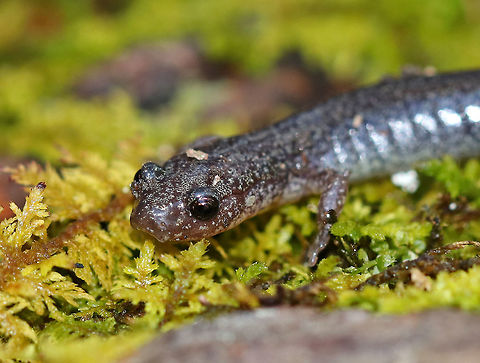 Promoted
Promoted
Lead-backed Salamander - Plethodon cinereus
This salamander was so fast! I only got a couple quick shots before it disappeared.
Plethodon cinereus exhibits color polymorphism with two common color variations - the 'red-backed' variety has a red dorsal stripe that tapers towards the tail and the 'lead-backed' variety lacks most or all of the red pigmentation. This spotting shows the lead-backed variety.
Habitat: Along the edge of a bog


The red-backed salamander is a species of small, hardy woodland salamander in the family Plethodontidae. The species inhabits wooded slopes in eastern North America, west to Missouri, south to North Carolina, and north from southern Quebec and the Maritime provinces in Canada to Minnesota.

comments (8)
The most common salamander that I find:
I find them everywhere in summer. I rarely see any other species. Posted 6 years ago
This is my favorite that I've found so far:
There are several other species in CT that I've never seen. One that I'm looking for specifically is Gyrinophilus porphyriticus. I'd love to find that one.
Good point about coniferous forests. I've never thought about that, but I don't think I've ever seen a salamander around conifers. Hmm.
I hope you find some salamanders this year! I find them in mostly deciduous forests, especially in early-ish morning, after it rains. Also, under rocks or rotting logs near wetland areas.
Posted 6 years ago
Ambystoma maculatum is listed in MN and there is a vouchered specimen of it from my county (Carlton). The DNR says it is "Restricted to a few forested areas in eastern Carlton and Pine counties."
I think I may have seen the larvae of Gyrinophilus porphyriticus in spring-fed streams where I used to live in Derby, CT (that was way back in time in the 1960s).
It is getting warmer here and soon the vernal ponds will have water in them and maybe Ambystoma salamanders. Posted 6 years ago
I read that Gyrinophilus porphyriticus can be found in cold streams in NW CT, but they are more rare now, I think. I'm not giving up my search though! I'm guessing they may have been more common in the 60's. Posted 6 years ago